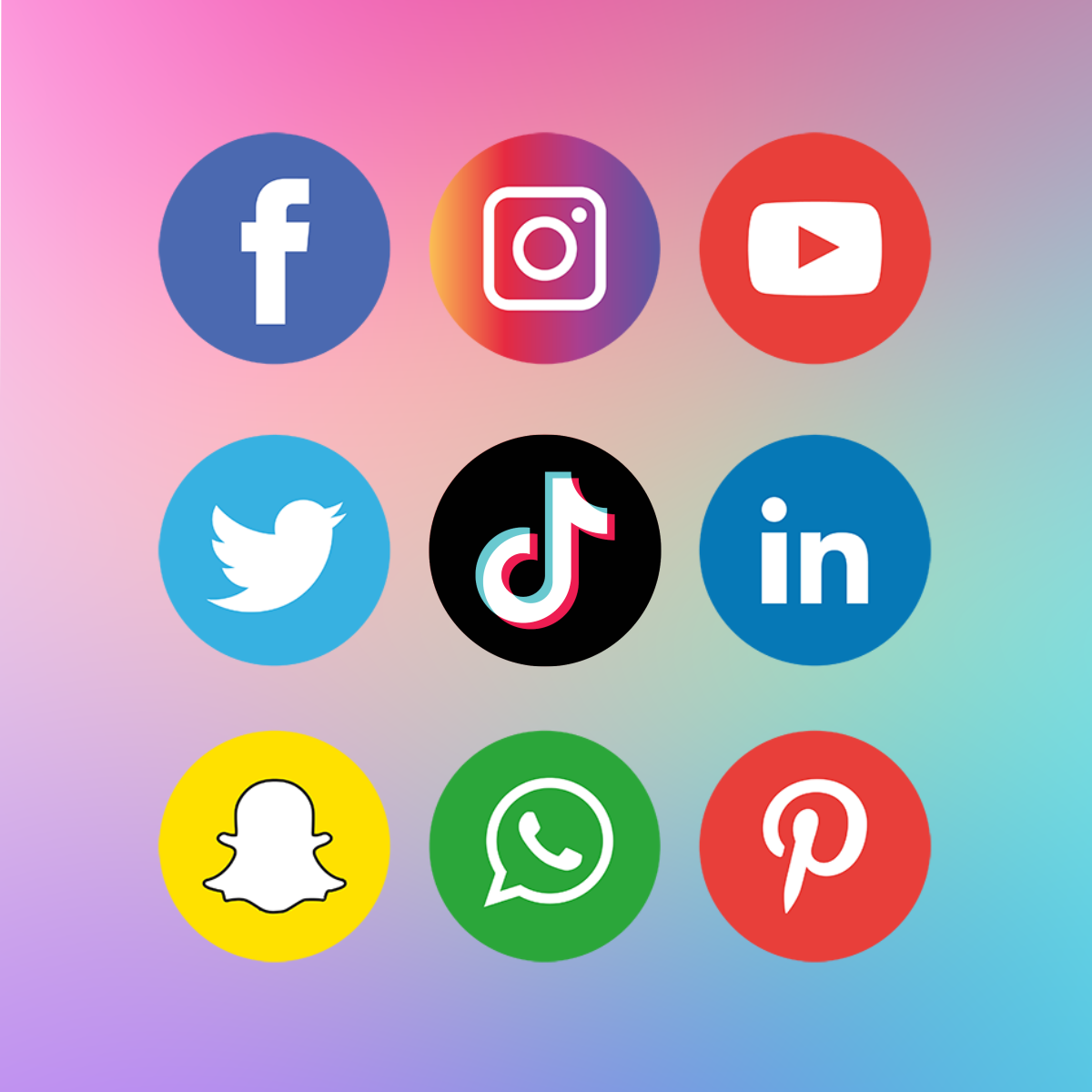How Social Media and Influencers Drive Fashion and Accessories Sales opens the door to a vibrant world where digital connections redefine style. In today’s fast-paced fashion landscape, platforms like Instagram and TikTok serve as dynamic trendsetters, shaping the choices of millions. Influencers take center stage, showcasing curated styles that not only capture attention but also drive significant sales, particularly among younger demographics eager to express their individuality through fashion.
The impact of social media on consumer behavior cannot be overstated, as user-generated content fosters brand loyalty and informs purchasing decisions. With engaging visuals and strategic marketing campaigns, brands harness the power of these platforms, creating an immersive online shopping experience that resonates with consumers’ desires. From viral trends to influencer collaborations, the interplay between social media and fashion is a fascinating narrative that continues to evolve.
The Influence of Social Media on Fashion Trends: How Social Media And Influencers Drive Fashion And Accessories Sales
Social media has revolutionized the way we consume and perceive fashion. Platforms like Instagram and TikTok have become powerful catalysts for trend inception, allowing styles to gain traction in a matter of hours or days. With influencers and everyday users posting outfits and accessories, the traditional fashion cycle has been upended, making the industry more accessible and dynamic than ever before.These platforms foster a culture of immediacy and virality, where trends can emerge spontaneously, driven by user engagement, likes, and shares.
The interplay between social media and fashion has led to significant shifts in consumer behavior, particularly among younger demographics who actively seek inspiration online.
Viral Fashion Trends on Social Media
The power of social media in shaping fashion trends is most evident through viral movements that have changed the landscape of style. These trends often start as a single post, capturing the imagination of millions. Notable examples include:
- The “Cottagecore” Aesthetic: This trend celebrates pastoral themes and vintage fashion, characterized by flowing dresses, florals, and a rustic vibe. It gained immense popularity on platforms like TikTok and Instagram, showcasing how lifestyle aesthetics can influence fashion choices.
- Streetwear Dominance: Icons like Virgil Abloh and brands such as Off-White have propelled streetwear into the spotlight, largely due to social media visibility. Influencers share their looks in urban settings, making streetwear accessible to a broader audience.
- Y2K Fashion Resurgence: The revival of early 2000s styles, from low-rise jeans to crop tops, gained momentum through TikTok challenges and Instagram reels. The nostalgic appeal resonates with Gen Z, demonstrating how social media can bridge generations.
Key demographic groups that are significantly influenced by social media in their fashion choices include:
- Generation Z: This group, born from the late 1990s to early 2010s, is the most active on platforms like TikTok and Instagram. They are driven by authenticity and often seek brands that reflect their values.
- Millennials: With a penchant for curated aesthetics, this demographic uses social media not only for inspiration but also for shopping, making platforms like Instagram essential for brands targeting them.
- Fashion Enthusiasts: Individuals of all ages who follow fashion influencers and brands on social media platforms to stay updated on the latest trends and styles, often participating in discussions and communities focused on fashion.
“Fashion is fleeting, but social media can make a trend last forever.”
The Role of Influencers in Fashion Marketing
In the contemporary landscape of fashion marketing, influencers have emerged as pivotal players, wielding significant power to shape consumer behaviors and preferences. Their ability to curate personal brands that resonate with their audience not only enhances their credibility but also drives substantial fashion sales. By leveraging social media platforms, influencers create authentic connections with followers, transforming their recommendations into sought-after trends and products.Influencers excel at curating their personal brands through a careful mix of lifestyle, aesthetics, and personal storytelling.
This curation fosters trust and loyalty among followers, positioning influencers as trusted authorities in fashion. The more an influencer aligns their brand with specific fashion styles and accessories, the more effectively they can drive sales. For instance, when an influencer showcases a particular outfit or accessory, their audience is often inspired to emulate that style, leading to increased demand for the featured items.
Collaborations between Influencers and Fashion Brands
Collaborations between influencers and fashion brands represent a powerful synergy that amplifies marketing efforts. These partnerships often yield exclusive collections or limited-edition products, generating buzz and excitement. The following points illustrate the significance of these collaborations:
- Access to Targeted Audiences: Influencers often possess niche followings that align perfectly with specific fashion brands, allowing for targeted marketing that resonates with potential customers.
- Authentic Promotion: When influencers promote a brand, it comes across as a recommendation from a friend rather than a traditional advertisement, increasing the likelihood of consumer engagement.
- Creative Content Generation: Collaborations often result in innovative marketing campaigns that highlight the unique qualities of both the influencer and the fashion brand, enhancing brand visibility.
- Increased Sales: Many brands report a significant uplift in sales following influencer collaborations, as followers are eager to purchase items endorsed by their favorite social media personalities.
Effectiveness of Influencer Marketing Compared to Traditional Advertising
Influencer marketing has demonstrated a level of effectiveness that often surpasses traditional advertising methods. The dynamics of consumer engagement have shifted, with consumers favoring authentic and relatable content over conventional ad campaigns. The following insights highlight the advantages of influencer marketing:
- Higher Engagement Rates: Influencers typically achieve higher engagement rates on social media than traditional ads, leading to a more direct interaction with potential customers.
- Cost-Effectiveness: Brands can often achieve better ROI with influencer partnerships than traditional advertising spends, as influencer campaigns can be tailored to fit varying budgets.
- Targeted Reach: Unlike traditional advertising, which casts a wide net, influencer marketing allows brands to reach specific demographics more efficiently, ensuring messages are delivered to the right audience.
- Enhanced Brand Loyalty: Consumers who engage with influencers often develop a sense of community and loyalty, making them more likely to support the brands those influencers endorse.
“Influencer marketing is not just about promoting products; it’s about building a community of brand advocates.”
Consumer Behavior and Social Media
Social media has emerged as a pivotal platform for influencing consumer purchasing decisions in the fashion industry. With the proliferation of platforms like Instagram, TikTok, and Pinterest, consumers are continually bombarded with visual content that shapes their perceptions and preferences. This has led to a significant shift in how brands market their products, not just through traditional advertising but also via user engagement and community interaction.The impact of social media on consumer behavior extends beyond mere exposure to products.
It fosters a sense of community and belonging among users, amplifying their purchasing decisions through social validation and trends. As consumers scroll through their feeds, they are encouraged to emulate styles seen on their favorite influencers or peers, often leading to impulsive buying behaviors driven by the fear of missing out (FOMO).
Influence of User-Generated Content on Brand Perception
User-generated content (UGC) plays a crucial role in shaping brand perception in the fashion sector. When consumers share their experiences with products, they create authentic narratives that resonate with potential buyers. This content, often seen as more trustworthy than traditional marketing, helps to build brand loyalty and enhances consumer trust.The following elements illustrate the importance of UGC in influencing fashion purchases:
- Authenticity: Real customer reviews and images create a sense of legitimacy that brands often struggle to achieve through polished advertisements.
- Engagement: UGC fosters community interaction, with users feeling more connected to both the brand and fellow consumers.
- Social Proof: Seeing others wear or endorse a product can significantly sway potential buyers, making them more likely to purchase.
The rise of hashtags and challenges on platforms like Instagram and TikTok encourages users to participate actively, further promoting brand visibility and consumer interest.
Engagement Rates of Social Media Platforms for Fashion Brands
Analyzing the engagement rates across various social media platforms provides insight into where fashion brands should focus their efforts for maximum impact. The following table compares the average engagement rates of popular social media platforms:
| Social Media Platform | Average Engagement Rate | Key Features |
|---|---|---|
| 1.22% | Visual-centric platform ideal for showcasing fashion through stunning imagery and stories. | |
| 0.08% | Broader audience reach; however, less effective for direct engagement in fashion. | |
| TikTok | 5.96% | Highly engaging short-form videos; perfect for trend integration and viral campaigns. |
| 0.2% | Strong for discovery and planning; users often seek inspiration, leading to higher intent to purchase. |
The data emphasizes the need for fashion brands to adapt their marketing strategies according to platform-specific engagement trends, capitalizing on the unique features each offers to connect with audiences effectively.
Trends in Fashion Retail and E-commerce
The landscape of fashion retail and e-commerce is evolving rapidly, driven by the seamless integration of social media into the shopping experience. As consumers increasingly rely on online platforms for fashion inspiration and purchasing, retailers are adopting innovative strategies to enhance user engagement and boost sales. Social media has become a pivotal tool, shaping how brands interact with their customers and influencing purchasing decisions.Social media integration enhances online shopping experiences by providing personalized interactions and dynamic content.
Retailers are utilizing platforms like Instagram and TikTok to showcase their collections through visually appealing posts, stories, and videos. This approach allows consumers to experience fashion in a more engaging manner, bridging the gap between discovery and purchase. For instance, features such as shoppable posts allow users to buy items directly from their favorite influencers’ feeds, streamlining the path to purchase.
Successful Social Media Campaigns
Numerous successful social media campaigns have demonstrated the potential of well-executed strategies in elevating brand visibility and driving sales. These campaigns leverage creativity and storytelling to resonate with audiences. One notable example is the #AerieREAL campaign by American Eagle’s lingerie line Aerie. The brand embraced body positivity and inclusivity, featuring unretouched images of diverse models in their marketing. This campaign not only fostered a strong emotional connection with consumers but also resulted in a remarkable sales increase, with Aerie’s revenue growing over 20% year-over-year following the campaign launch.Another significant success is the collaboration between the fashion brand Revolve and social media influencers.
Revolve invited top influencers to exclusive events, showcasing their latest collections in stunning locations, which were extensively shared on social media platforms. This strategy led to a surge in online traffic and substantial increases in sales during and after the campaigns, illustrating the effective synergy between influencer marketing and e-commerce.
Rise of Live Shopping Events, How Social Media and Influencers Drive Fashion and Accessories Sales
The rise of live shopping events has significantly impacted fashion sales, creating a new dimension of e-commerce. Live shopping combines entertainment with shopping, allowing brands to showcase products in real-time while engaging directly with consumers.These events typically feature influencers or brand ambassadors presenting items live, demonstrating how to style them, and answering viewer questions. This interactive format enhances the shopping experience by providing instant gratification and a sense of urgency.
For instance, the fashion retailer Nordstrom has successfully hosted live shopping events on platforms like Instagram and Facebook, showcasing new arrivals while offering exclusive discounts to viewers. Such initiatives have proven effective, generating substantial spikes in sales during the events and fostering a loyal community of shoppers.Moreover, live shopping events enable brands to gather valuable data on consumer preferences and behavior.
This information can be pivotal in tailoring future campaigns and product offerings, ultimately leading to increased customer satisfaction and retention.
Live shopping events are revolutionizing the way consumers interact with brands, merging entertainment with e-commerce for a unique shopping experience.
The Impact of Visual Content
High-quality visual content plays a pivotal role in fashion marketing on social media. In an age where consumers are inundated with information, captivating imagery can grab attention and inspire purchasing decisions. Fashion brands must recognize that their visuals not only showcase products but also communicate brand identity and lifestyle aspirations. Stunning visuals create an emotional connection, making consumers more likely to engage with content and ultimately drive sales.Video content has emerged as an essential tool to enhance customer engagement in the fashion industry.
With the rise of platforms like TikTok and Instagram Reels, short-form video content allows brands to display their products in dynamic ways. Videos can demonstrate product functionality, highlight styling tips, and provide behind-the-scenes glimpses into the brand’s culture and craftsmanship. By utilizing video, brands can capture the essence of their products in action, leading to higher viewer retention and increased likelihood of conversion.
Significance of High-Quality Visuals
The importance of high-quality visuals cannot be overstated in the digital fashion marketplace. High-resolution images and well-composed shots attract viewers and foster brand credibility. Brands need to focus on creating a visual narrative that aligns with their target audience’s lifestyle.
Professional Photography
Using professional photographers ensures that products are showcased in the best light, literally and figuratively. Quality imagery can elevate a brand’s presence in a crowded marketplace.
Consistent Aesthetic
Maintaining a consistent visual style across social media platforms reinforces brand identity. This could include a specific color palette or a signature editing style that makes the brand instantly recognizable.
User-Generated Content
Encouraging customers to share their own high-quality images wearing the brand’s products not only provides authentic content but also builds community. Featuring user-generated content can enhance trust and engagement.
Role of Video Content
Video content serves as a powerful medium to engage and inform consumers, making it a vital asset in fashion marketing strategies. It allows brands to tell stories that resonate on a deeper level.
Product Demonstrations
Videos can showcase how a piece is worn and styled, providing consumers with practical insights into the product. For instance, a clothing brand may create a video showing a model wearing a dress in various settings, enhancing relatability.
Behind-the-Scenes Footage
Sharing behind-the-scenes content offers transparency into the brand’s process, from design to production. This fosters a connection with consumers who appreciate authenticity and craftsmanship.
Live Streams and Q&A Sessions
Hosting live events on platforms like Instagram can create real-time interaction with followers. Engaging directly with the audience helps build a loyal community and gives them a reason to return.
Best Practices for Creating Visual Content
Brands should employ best practices when developing visual content for social media to maximize impact and engagement. Proper planning and execution can significantly enhance brand visibility and consumer interaction.
Optimize for Each Platform
Different social media platforms require varying content formats. Brands must tailor their visuals to fit the specifications and audience preferences of each platform, such as using square images for Instagram and vertical videos for TikTok.
Invest in Quality Equipment
Utilizing high-quality cameras and lighting equipment can make a noticeable difference. Brands should consider investing in photography and videography gear or hiring professionals to achieve the best results.
Engage with Trends
Keeping up with visual trends, such as color schemes or popular challenges, can help brands stay relevant. Incorporating trending styles into content can capture attention and encourage shares.
Analytics and Feedback
Monitoring engagement metrics and soliciting audience feedback on visual content can provide valuable insights for future campaigns. Understanding what resonates with consumers allows brands to refine their visual strategies effectively.
“Visual content is the new currency of brand storytelling in fashion.”
Ethical Considerations in Influencer Marketing
In the rapidly evolving landscape of fashion marketing, ethical considerations play a pivotal role in shaping the dynamics between brands, influencers, and consumers. As influencer partnerships become increasingly prevalent, it is essential to address potential ethical issues that may arise, ensuring that transparency and integrity remain at the forefront of these collaborations.One major ethical concern in influencer marketing is the lack of transparency regarding paid partnerships.
Influencers often tout their favorite products, but if these endorsements are financially motivated, consumers may unknowingly be misled. Brands that prioritize transparency in their influencer collaborations help establish trust with their audience, promoting a healthier consumer environment. For instance, brands like Glossier have made strides in this area by openly disclosing when their influencers are compensated for posts, thus reinforcing their commitment to honesty.
Guidelines for Ethical Influencer Marketing Practices
To foster a transparent and ethical influencer marketing ecosystem, it is vital for brands and influencers to adhere to established guidelines. By doing so, they can enhance authenticity and consumer trust. Below are essential guidelines for ethical influencer marketing practices:Brands and influencers should disclose all paid partnerships clearly to avoid misleading consumers. Utilizing hashtags like #ad or #sponsored is one effective way to communicate this relationship.
Influencers must share their genuine opinions and experiences with the products they promote. Authenticity resonates more with consumers than scripted endorsements.Brands should prioritize long-term relationships with influencers rather than one-off transactions. This approach allows for deeper connections and more credible endorsements.Brands and influencers must ensure compliance with the Federal Trade Commission (FTC) guidelines, which mandate clear disclosures about paid endorsements.Collaborations should focus on promoting products that align with the influencer’s authentic style and values, ensuring that their audience receives relevant and meaningful content.By adhering to these guidelines, brands and influencers can contribute to a more ethical marketing landscape that respects consumer intelligence and fosters genuine relationships.
Future Trends in Social Media and Fashion

The intersection of social media and fashion is evolving rapidly, driven by technological advancements and changing consumer behaviors. As we look to the future, emerging technologies such as augmented reality (AR) and virtual reality (VR) are poised to revolutionize how brands engage with consumers, redefine marketing strategies, and influence purchasing decisions in the fashion industry.The integration of AR and VR in fashion marketing offers immersive experiences that enhance consumer interaction with products.
For instance, AR apps allow users to virtually try on clothing and accessories, creating a personalized shopping experience that encourages conversion. Brands like Gucci and Nike have already begun utilizing these technologies to provide consumers with innovative ways to explore their collections, ultimately driving sales and brand loyalty.
Emerging Technologies in Fashion Marketing
The role of AR and VR in fashion marketing is becoming increasingly significant, providing consumers with realistic and engaging experiences. The capabilities of these technologies can be highlighted as follows:
- Virtual Try-Ons: Consumers can visualize how clothing fits and looks on them without leaving their homes. This technology reduces return rates, as customers make more informed purchasing decisions.
- Immersive Fashion Shows: Brands can host virtual fashion shows, allowing audiences worldwide to attend from the comfort of their homes. This expands reach and inclusivity, engaging a more diverse audience.
- Interactive Advertising: AR-enabled advertisements can allow consumers to interact with products through their smartphones, creating a more impactful advertising experience that compels action.
Consumer preferences are shifting in response to these innovations, as the demand for personalized and engaging shopping experiences increases. Social media platforms continue to play a crucial role in this evolution by providing the necessary infrastructure for brands to showcase their offerings creatively.
Shifting Consumer Preferences
As technologies advance, consumer expectations also evolve. The following factors are influencing shifts in consumer preferences:
- Sustainability: Modern consumers are increasingly conscious of ethical considerations and sustainability in fashion. Brands that showcase their eco-friendly practices on social media resonate more with environmentally aware shoppers.
- Authenticity: Consumers favor genuine connections and transparency from brands. Influencers who promote products authentically enhance trust and drive sales, encouraging collaborations that reflect shared values.
- Community Engagement: Social media allows consumers to form communities around fashion interests. Brands that engage with these communities and encourage user-generated content foster brand loyalty and advocacy.
The emergence of new social media platforms poses an additional layer of disruption to traditional fashion marketing strategies. As new platforms arise, they provide unique opportunities for brands to connect with audiences in novel ways.
New Platforms Disrupting Traditional Marketing
The potential for new social media platforms to disrupt fashion marketing strategies is significant, driven by their unique features and audience engagement styles. Notable trends include:
- Short-Form Video Content: Platforms like TikTok have shifted the fashion marketing paradigm towards short, engaging video snippets that capture trends and drive virality, making them ideal for reaching younger audiences.
- Live Shopping Experiences: New platforms often incorporate live shopping features, allowing consumers to purchase directly during live streams. This interactive model enhances urgency and excitement, leading to increased sales.
- Niche Networks: Emerging niche platforms focused on specific interests can foster deeper connections between brands and targeted audiences, allowing for more tailored marketing strategies that resonate strongly with consumers.
As emerging technologies and new platforms reshape the landscape, the fashion industry must adapt swiftly to remain relevant and competitive.



